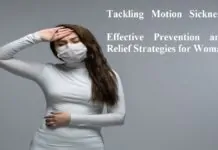The term outpatient means any patient who receives medical care and can independently manage his recovery without being admitted to the hospital. And, outpatient physical therapy means the treatment in which physical therapy is the major concern for the patient.
For example, a patient with a minor sports injury with no other medical history requires outpatient physical therapy. A patient with multiple medical conditions and heart attack needs inpatient clinical care.
The treatment involves exercises, physical activities, and various methods or procedures that help them recover.
The goal of the patients is to achieve optimal health and physical well-being. After an illness, physical therapy could be the best aid for recovery.
Table of Contents
Purpose of Outpatient Physical Therapy
The major purpose of outpatient physical therapy is to help people in their optimal recovery and promote an active lifestyle. This will help them restore their ability to move. Commonly, outpatient physical therapy is used for those patients who are trying to recover from:
· Surgery
· Orthopedic injuries
· Sprains and ligament tears
· Chronic pain
· Balance disorder
· Arthritis
· Pre/post-operative conditions
· Back and neck pain
· Recover from a stroke
· Manage age-related issues
· Sports or work-related injuries
· Many other painful conditions
Treatment Types
A wide range of therapies exists that may be passive or active modalities. Depending upon the need of patients, here are some examples of treatment options:
Exercise Therapy
This type of physical therapy is prescribed to help a patient in his recovery from any diseased conditions by:
· Reducing their risk
· Preventing impairment
· Optimizing overall health
· Enhancing the functional capacity
Hot/Cold Therapy
Both therapies are used to treat musculoskeletal pain. Studies show that both heat and ice therapies help to prevent tissue damage after exercise.
Electric Stimulant Therapy
This type of therapy is most commonly used to reduce pain by improving better blood circulation, leading to faster recovery. This type of therapy is used for patients with conditions like:
· Arthritis
· Surgery
· Bursitis
· Injuries
· Wounds
Hydrotherapy
This type of treatment involves water, but the therapy differs from swimming. Special exercises are used to be done in a warm water pool with temperatures ranging from 33-36*C. This helps to strengthen and relax muscles.
Joint Mobilization
It’s a manual technique that involves the movement of joints carefully in desired directions. This type of therapy is used to fix stiff joints.
Laser or Light Therapy
Laser or light therapy is used to treat muscle fatigue, especially after surgery.
Traction
It involves slowly and gradually pulling the fractured or stiff part of the body. The purpose is to realign the bone fractures or correct the stiffness of joints.
And many other types also exist.
Types of Outpatient Physical Therapy Settings
A wide range of variability exists in outpatient physical therapy settings. Therefore, it’s important to test which type of OPT better suits you. Here are some options from which you can choose which one suits you better.
| Physician-owned | In-network Private | In-network corporate | Out-of-network private | |
| Avg. duration of care | ≥16 visits | 10-12 visits | 12-16 visits | ≥10 visits |
| Avg. patients seen/day | 20-25 | 10-16 | 16-20 or more | 6-8 |
| PT expertise level | Variable | Advance certification in field + 5 years’ experience | 5+ years of experience | |
| Techs used | Yes (mostly) | Yes (minimally) | Yes (sometimes) | Rare |
Benefits of Outpatient Physical Therapy
The fact may surprise you that physical therapy is the way more effective option than opioids to treat post-surgical pain. There are many benefits of outpatient physical therapy. It helps to:
· Decrease pain
· Reduce stress
· Reduce swelling and inflammations
· Increase muscle strength
· Improve coordination and balance
· Improve body posture
· Increase mobility
Duration of Care
Depending upon the condition of the patient outpatient physical therapy is given. The duration of therapy varies from one to three hours. Also, a patient can continue the exercises at home in between the sessions.
Here are some factors that decide the duration of treatment.
Patient Factors
· Age – interact with other treatment factors
· Gender – interact with other factors
· Language-communication difficulties lead to higher duration
· Level of function – better functional capacity leads to lower treatment duration
· Physical diagnosis – neurological diagnosis leads to longer treatment duration while orthopedic condition – lesser duration
· Comorbidities – longer treatment duration
Institutional Factors
· Location – longer in urban compared to rural
· Type of setting – better service leads to lesser duration
· Type and number of disciplines involved in treatment – positive relation
Factors Related to Therapist
· Techniques used – evidence-based treatment leads to lesser duration
· Goals – many goals may be associated with longer duration
Pros for Outpatient Physical Therapist
· There are more hands-on manual therapy
· You got to do more advanced exercise compared to patients in the hospital
· People who come to outpatient settings have higher goals of just returning to playing a sport or being able to walk without pain or being able to garden without pain.
· In outpatient physical therapy, typically there are smaller teams so you get to build close relationships with your coworkers. So becomes like a family.
· Patients typically need to visit outpatient physical therapy week after week for a couple of months so this helps to build close relationships with their patients. This helps to track long-term progression and how they improve.
· Compared to hospitals, it’s typically more of a comfortable environment.
Cones for Outpatient Physical Therapist
· Seeing more patients
· More documentation
· Less time off
· Less consistent schedule
Conclusion
Outpatient physical therapy involves treatment modalities for patients that specifically include physical therapies without being admitted to hospitals.
Most commonly, it helps to treat conditions involving the musculoskeletal system.
If you find it difficult to move and feels pain, then talk to your physical therapist. He will help you to decide which treatment option is best for your condition.
For overall recovery, it’s vital to have a therapist who will help you both physically and emotionally.

















